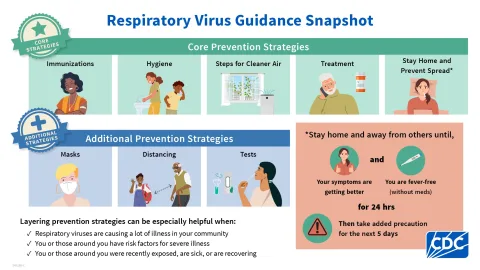Influenza antivirals play a crucial role in the treatment of flu infections, particularly for older adults and those at higher risk of severe complications. Recent studies reveal significant gaps in the timely prescription of these vital medications within urgent care and emergency department settings, underscoring the importance of effective flu treatment strategies. During the 2023-24 flu season, many patients, especially those aged 65 and older, often missed out on receiving antiviral prescriptions despite being eligible. This raises concerns about public health practices and the need for more proactive measures to address prescription gaps in these high-stakes environments. By understanding the factors influencing antiviral prescriptions, healthcare providers can enhance patient outcomes and reduce the burden of influenza.
When discussing influenza antivirals, it’s essential to consider alternative terms and concepts to enrich the narrative around flu treatment. Antiviral medications, such as oseltamivir, are critical especially during flu outbreaks, providing necessary interventions for patients with acute respiratory illnesses. The relationship between prescription practices and urgent care for influenza patients highlights an area ripe for refinement and improvement in healthcare systems. Addressing issues related to timely antiviral prescriptions can significantly impact the efficiency of emergency department flu management. Understanding these dynamics can lead to enhanced strategies that better serve at-risk populations during peak flu seasons.
Understanding Influenza Antivirals
Influenza antivirals are medications designed to treat infections caused by the influenza virus. This class of drugs can significantly reduce the severity and duration of flu symptoms if administered within the first 48 hours of symptom onset. There are several antiviral medications, such as oseltamivir (commonly known as Tamiflu), zanamivir, and baloxavir, that can help manage influenza effectively. Given their pivotal role in flu treatment, it’s essential for both patients and healthcare providers to understand when and how these antivirals should be prescribed.
Unfortunately, despite their proven efficacy, many patients who are at high risk of severe complications do not receive these prescriptions in a timely manner. Gaps in prescribing can happen during urgent care visits or in emergency department settings when patients present with flu symptoms. This is especially concerning for vulnerable populations, such as older adults or individuals with chronic health conditions, who may benefit the most from early intervention using these antivirals.
Frequently Asked Questions
What are influenza antivirals and how do they work for flu treatment?
Influenza antivirals are medications specifically designed to treat influenza infections and alleviate symptoms. They work by inhibiting the replication of the virus within the body, which helps to reduce the severity and duration of flu symptoms when taken early in the course of the illness.
Why are antiviral prescriptions important in urgent care for influenza treatment?
Antiviral prescriptions are crucial in urgent care for treating influenza because they can significantly reduce the risk of severe complications, especially in high-risk populations. Timely access to these medications can lead to faster recovery and a lower likelihood of hospitalization.
What did recent studies reveal about antiviral prescriptions for influenza in emergency departments?
Recent studies indicate that while a significant percentage of patients at higher risk for severe influenza received antiviral prescriptions in emergency departments, there remain notable gaps in timely administration and dispensing, particularly among older adults, emphasizing the need for improved strategies in flu treatment.
How common is it for patients aged 65 and older to receive influenza antivirals in urgent care settings?
Studies have shown that only about 63% of patients aged 65 and older receive antiviral prescriptions during their urgent care visits, highlighting a concerning gap in the timely treatment of influenza in this vulnerable age group.
What are the common influenza antivirals prescribed in urgent care settings?
Oseltamivir (Tamiflu) is the most commonly prescribed antiviral for influenza in urgent care settings. Among patients eligible for antiviral treatment, a significant majority receive this medication, helping to mitigate flu symptoms if administered promptly.
How can we improve the timeliness of antiviral prescriptions for influenza?
Improving the timeliness of antiviral prescriptions can be achieved through the implementation of rapid point-of-care testing in urgent care and emergency department settings, along with targeted strategies to prioritize treatment for older and chronically ill patients.
Are there any observed disparities in antiviral dispensing among different age groups for flu treatment?
Yes, research shows that while the majority of antiviral prescriptions are written for patients in urgent care, those aged 50-64 have the highest rates of antiviral dispensing, whereas older patients (65 and above) frequently experience delays in receiving their medications.
What steps can urgent care facilities take to enhance influenza treatment and antiviral prescription rates?
Urgent care facilities can enhance influenza treatment and optimize antiviral prescription rates by providing clearer guidelines for high-risk patients, educating staff on the importance of rapid treatment initiation, and leveraging rapid testing technologies to facilitate quicker diagnosis and prescribing.
| Key Point | Details |
|---|---|
| Study Overview | The study analyzed 10,700 patient encounters in UC and ED settings with positive influenza test results during the 2023-24 season. |
| Patient Demographics | Median age was 65 years; 59% female; 36% Hispanic; 37% non-Hispanic White; 16% Medicaid recipients. |
| Antiviral Prescription Rate | 58% of patients were prescribed antivirals during their visit, 67% same-day prescriptions. |
| Drug Dispensation Statistics | Of those prescribed, 80% received their antivirals, with 65% obtaining them the same day. |
| Age-Related Findings | Patients aged 50-64 received the most antivirals; only 63% of those aged 65+ got prescriptions on the same day. |
| Recommendations | Authors suggest improving strategies for early antiviral initiation and better point-of-care testing. |
Summary
Influenza antivirals play a critical role in managing influenza infections, particularly for older adults at increased risk for severe complications. However, a recent study indicates that many of these patients do not receive timely prescriptions in urgent care and emergency department settings. Addressing the identified gaps and enhancing prescription practices is essential for improving treatment outcomes and minimizing the impact of influenza among vulnerable populations.
The content provided on this blog (e.g., symptom descriptions, health tips, or general advice) is for informational purposes only and is not a substitute for professional medical advice, diagnosis, or treatment. Always seek the guidance of your physician or other qualified healthcare provider with any questions you may have regarding a medical condition. Never disregard professional medical advice or delay seeking it because of something you have read on this website. If you believe you may have a medical emergency, call your doctor or emergency services immediately. Reliance on any information provided by this blog is solely at your own risk.








